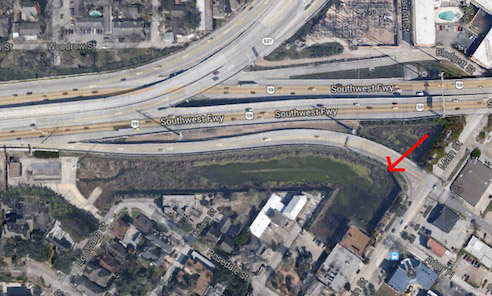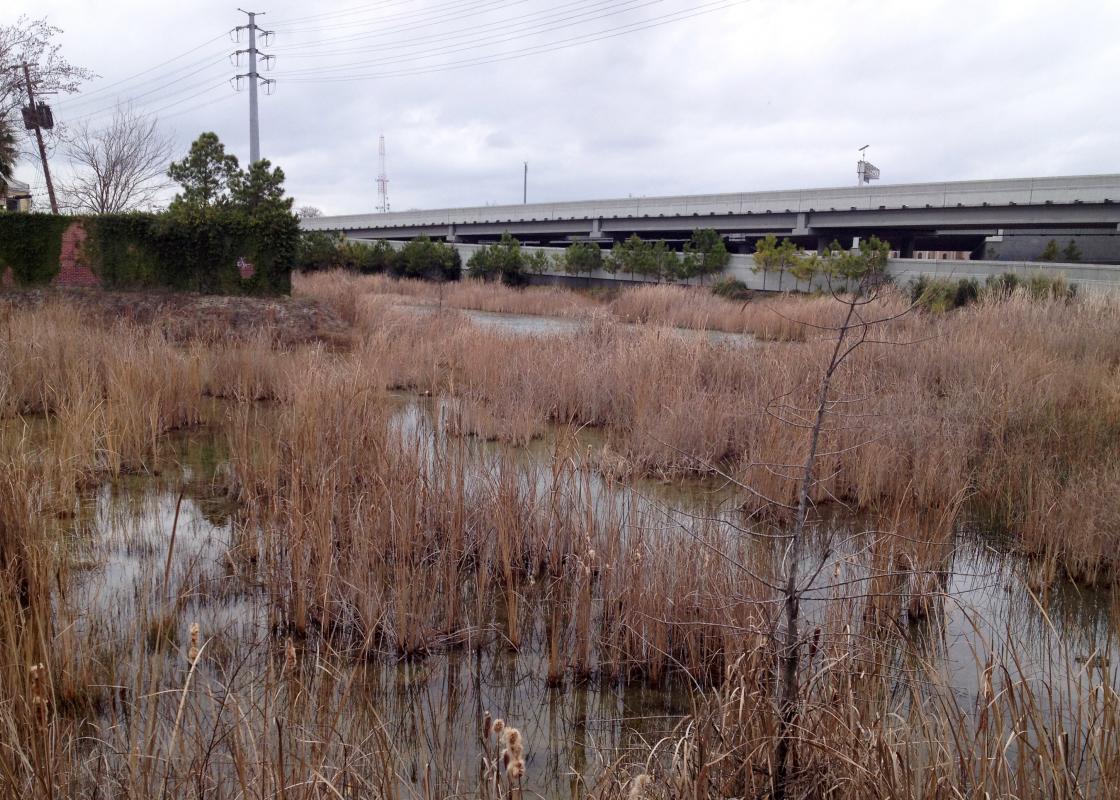OffCite invites short essays, reviews, and observations on specific moments and places. Interested in contributing your own? Let us know.
Just west of Main Street and south of 59: From the descending highway ramp, drivers glance at me momentarily — a pedestrian and therefore a freak — before the demands of traffic draw back their attention. The grass inside the curb is thick and uneven, sheered by what must be a monstrous lawnmower. I squeeze between a fencepost and concrete barrier. The marsh is a 1,000-foot-long space. It bends slightly so the end is out of sight. Cattails and pine saplings are thick along the edges of a dirt embankment. It feels wide open even though it is completely walled in.
One wall belongs to an old theater that has been a museum at times. Huge anthills climb up the brick of the other walls, which are anything but blank. They are covered in graffiti, not hurried tags, but big letters that took time to craft, more welcoming than territorial, as if the artist attempted to give the place a not-name, a not-logo. Now I recognize the letters as the work of NEKST. The graffiti gives you a way to commune with others who have found the spot.

I suspect the Texas Department of Transportation has some official identifier for the marsh. It must serve some legal function, a required detention basin for rainwater runoff. As much as I love the new trails along our bayous, I often prefer the unscripted spaces that infrastructure produces. For a few seconds, you can exhale. You are outside the relentless hustle. The sun drops behind the marsh so that the water shimmers and appears to stretch as far as the highway, but the shriek and rumble of the highway does not soften.
More >>>
Read all our CiteSeeing posts.











